“A Little Nostalgia for the Old Folks”
- Gary Gruber

- Nov 22, 2023
- 5 min read
That’s an irreverent intro to a Frank Zappa song from the late 60’s. Zappa’s sly way of poking fun at his own generation – done sparingly – had the acid bite of a bad cup of coffee; especially since he began the song with the first line of the Kingsmen’s classic “Louie Louie”. His intention was to slam anyone three years older than himself as old, not uncommon for the time.
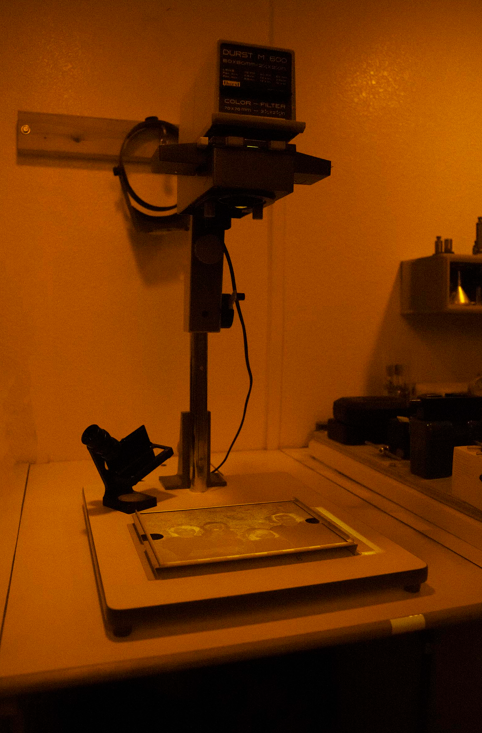
The turbulence (extremely mild understatement in lieu of me hacking up some really vile language to describe our culture for the past 40 years) has pushed me into reverse for a while. There is always comfort in the past, especially when you focus (pad pun for a photog) only on the good stuff.
The photo above is of a newly acquired Durst M600 enlarger, my first. I bought the original at Camera City in the Narrows Shopping Center in Edwardsville, Pa. in 1968. I had been hired to work as a salesman after school for $1.15 / hour (after quickly demonstrating my photographic prowess, I was given a raise to $1.35 per hour). It gave me the freedom to exit the community darkroom at the Jewish Community Center, where I frequently cursed a blue streak at everyone else for their insipid idiocy at handling the photo chemicals I revered.
Now, in the darkness of the night (blackout drapes weren’t available back in the 60’s), I could print my little heart out, eking out memory after memory into a plastic 8 x 10 tray of developer, stop bath, and fixer.
I carefully preserved the Styrofoam container for this modular little fellow. It made the trip up to Syracuse University late in 1969. In my personal study room, I used black masking tape to painstakingly cover the window to permit only darkness to flow in from the outside.
I had an edge, and I relished the shit out of it. While everyone else in my photo period was stuck in the darkroom after class; processing film, waiting forever for it to dry, proofing the film, printing the good ones… I haughtily walked in with a 33-gallon garbage bag obtained from the dining hall, full of my prints from the previous evening (washed in the dormitory bathtub). I would quickly re-wash and dry them, and scamper out within an hour, with a wide grin plastered on my face: I could now spend the rest of the day photographing, alone, and very content.
The Durst followed me to the Pocono Mountains in 1971 (1871 according to my daughter), where I worked for a somewhat despicable printing company. My chicken-shack-converted-into-a-cabin on a stream in the woods -- was as idyllic a home as I have ever had, not to mention the three single women living 100 feet from me. I would beg them to turn some of their lights out at night so I could print.
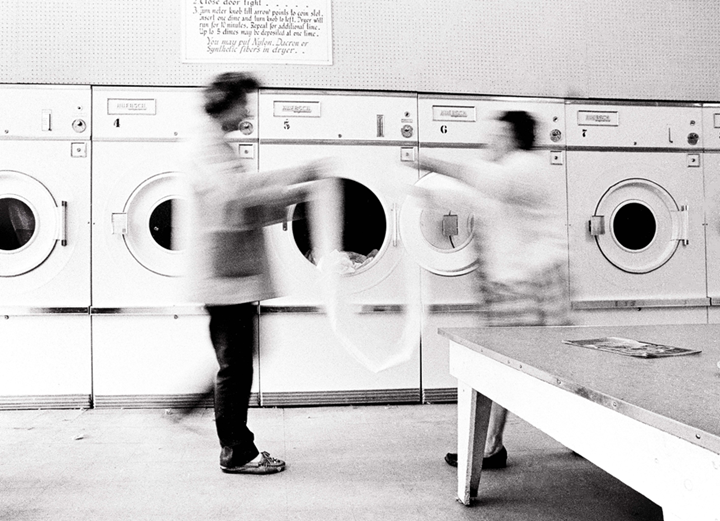
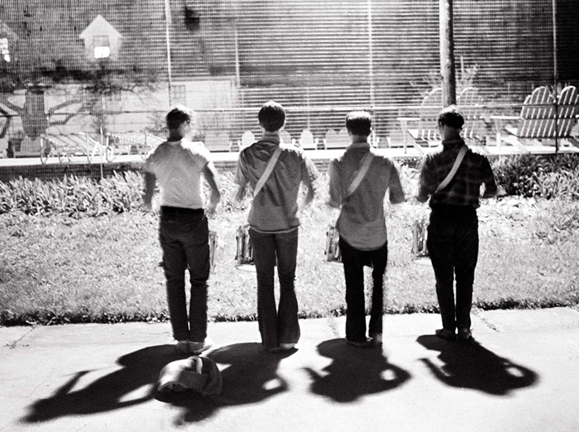
When I headed west in 1974 in Phyllis’ Camaro, everything I owned was sitting on the back seat. My enlarger, lovingly ensconced in its Styrofoam box, rested quietly in the trunk. My first domicile in Hollywood was a small, furnished apartment that I paid the princely sum of $21.50 per week for. Unfortunately, there wasn’t even a closet I could convert into a darkroom, so printing was delayed until my move to Silver Lake, spurred on by the murder of a man living above me (already detailed in another post (https://www.gruberwrites.com/post/me-and-motels).
My new apartment had a cozy little walk thru closet between the living area and the bathroom. Perfect for my darkroom. Although it was a bit pricier than my last digs ($97.50 per month), it was quiet, safe, and close to food. My job at yet another camera store kept me supplied with all the expendables required to keep my photography moving right along.
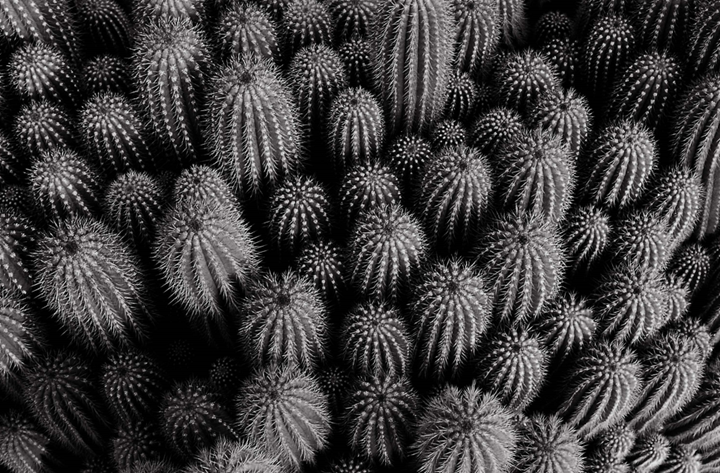
I loaded everything I needed onto the back of my Honda 305 each weekend and headed out to parts unknown. The above and below photos were snagged at Huntington Gardens in Pasadena.
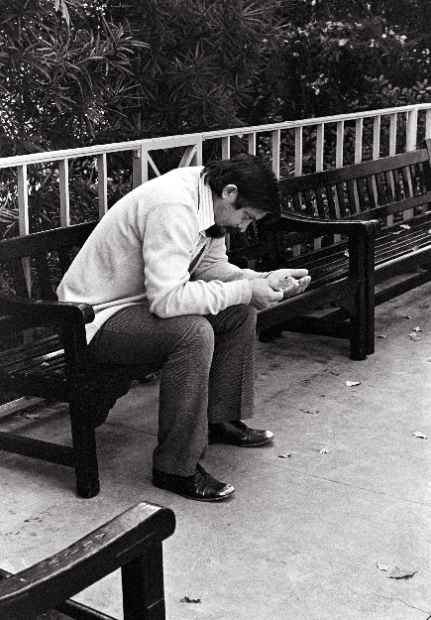
When the opportunity to become the chief photographer for the public relations firm handling Eisenhower Medical Center in Rancho Mirage appeared on the horizon, I made a hasty exit from all things Hollywood and resettled not far from the beautiful home Phyllis’ mom has purchased, also in R.M.
I found a little old lady willing to rent me a cottage on her property for $85 a month, utilities included. Borrowing Phyllis’ car, I high tailed it out to Indio and the only lumber / hardware store in the desert at the time. Thinking on my feet, I had them cut me a long sheet of plywood and grabbed dozens of feet of PVC tubing (used for irrigation), and an assortment of elbows and joints. I can’t claim this to be an original idea. My first week in the desert, Christine got me a 48 hour job assembling furniture at the only furniture store in the desert. She knew the owner, knew I needed money, and that was that.
The furniture frames were made from a slightly higher grade PVC tubing than what is found in the hardware store, but seeing what could be done with it gave me an edge. Pushing them together to form a frame for tables and chairs was child’s play. We never discussed salary or hours or working conditions. The store was having a weekend parking lot sale, and my job was to literally build the sale – which I did with extreme gusto. The manager was so happy with my work ethic, he called me into his office on Sunday evening to thank me. He handed me two crisp hundred dollar bills for my effort, which left me speechless (2nd time in my life I had nothing to say).
After I cobbled together the table frame with the aid of a hacksaw, I screwed the plywood top on, and had me my first darkroom worktable. It was long enough for my enlarger, chemical trays, and all the other sundries required.
Alas, as my work as a pro for the first time took off in high gear (there were only 7 photographers covering the entire Coachella Valley at the time), I knew it was time for a professional grade enlarger. A quick trip into Los Angeles scored me an Omega D-2, a very ratty D-2 at that. It was broken, and very tired, but it was within my budget – what was left from those two ‘C’ notes…
My blossoming mechanical skills made for an easy restoration and upgrade. My little Durst went back in its Styrofoam box, remaining there for several years until I donated it to a children’s group from San Bernardino who were trying to build a darkroom for the kids.
My darkroom in our home in Bermuda Dunes got repurposed back in the late 90’s when I had already made the switch from photography to software development. It became my gun room, although I kept one sink for processing film. When I retired and made the transition back to photography, being able to process film was a blessing. I would then scan it and print the images digitally.
So here I am, pretty close to the end of the line, and I have laid out plans to re-transition my darkroom back to a darkroom. The electrical work is complete. The next phase is building another robust table to relocate my reloading equipment, which will then give me access to the sink that has been sitting dormant for nearly 30 years.
There is at least one (possibly insurmountable) obstacle still in my way. When digital photography became the norm, the photo paper manufacturers that I had depended on for my entire career shut down. The printing papers available today are abysmal, and if anyone has a secret stash of Agfa Portriga Rapid or Forte papers in a deep freeze somewhere, they are keeping it to themselves. The papers available today are the Jack-in-the-Box of photo supplies. They are ugly, despicable attempts to imitate what used to be the cream of the crop.
I won’t give up. I will keep looking. And if you know me, even in passing, you know I will succeed.


Comments